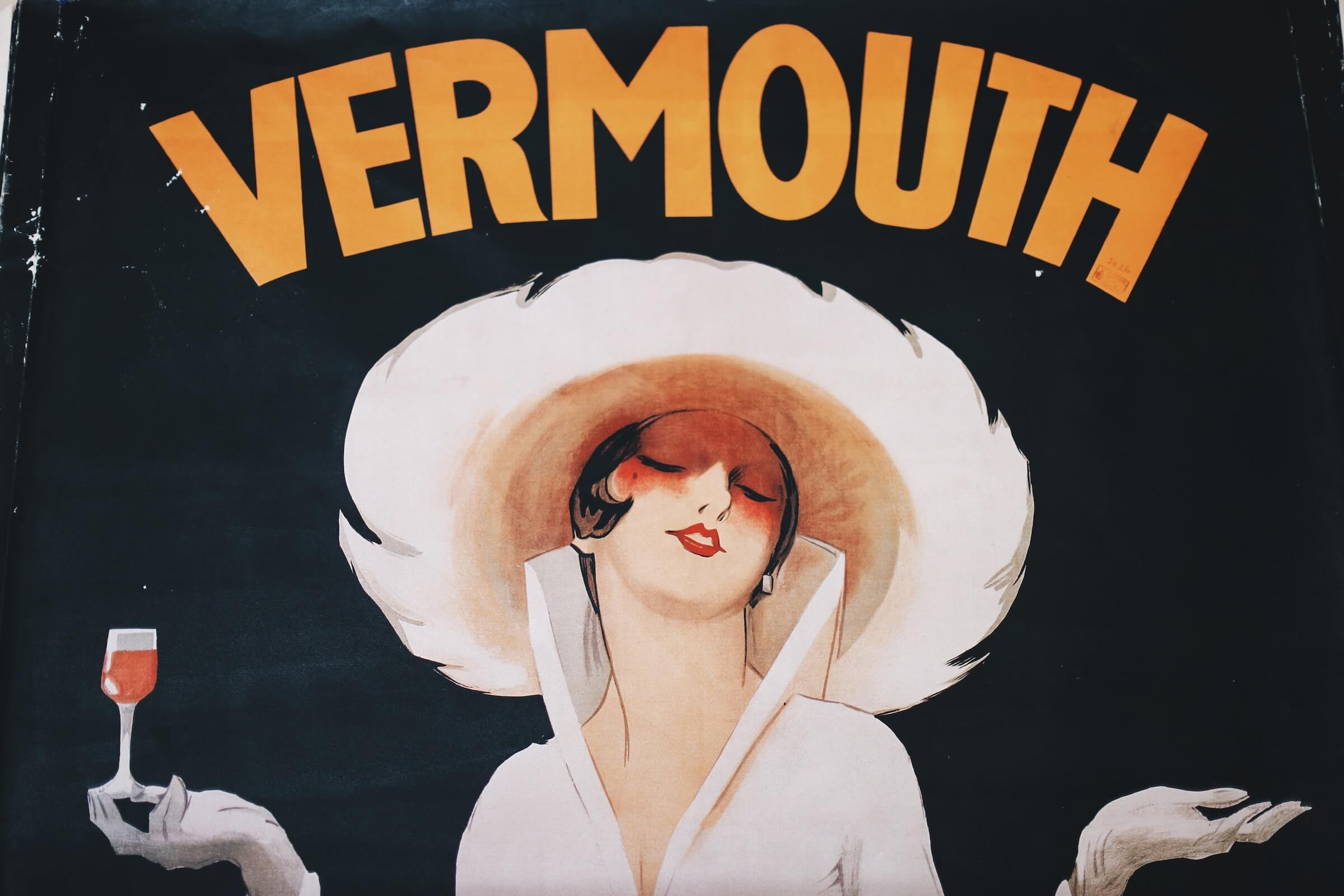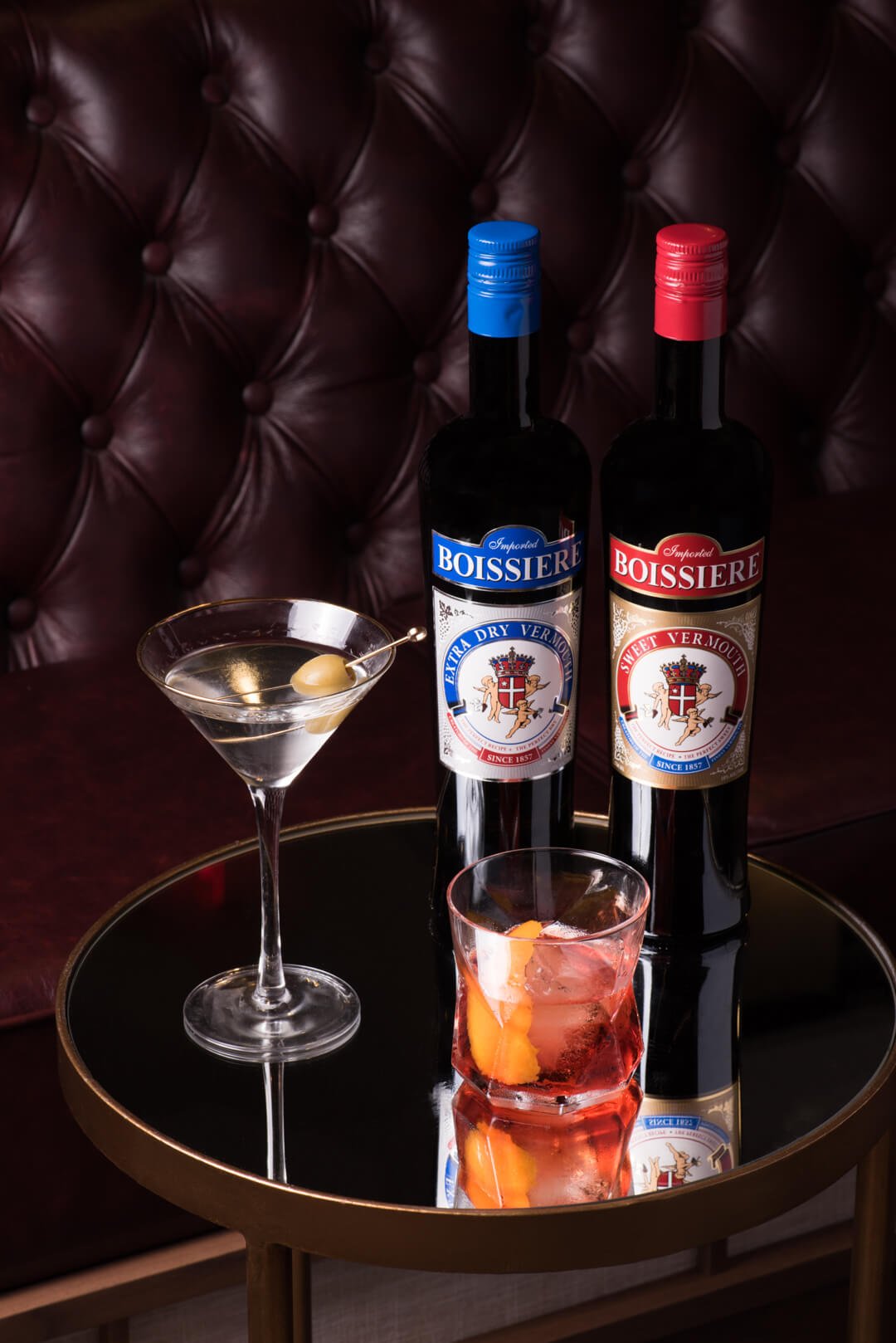What’s the Difference Between Italian and French Vermouth?
Vermouth earned its spot on the bar shelf as a critical ingredient in Martinis and Manhattans, but the aromatized, fortified aperitif wine has foundations in French and Italian drinking culture that cannot be ignored. Higher in alcohol than most wines, but lower than most spirits, vermouth is made sweet and boozy with the introduction of brandy or other neutral spirits to up the alcohol. The word “aromatized” indicates that botanicals have been introduced, adding bitterness and flavor that stimulate the appetite, making them perfect for pre-meal sipping or pairing with cheese. So you may be wondering, what’s the difference between vermouths from France and Italy?
History of Vermouth
Vermouth’s ancestors–wine tinctures flavored with nuts, honey, and spices–date back to Ancient Greece. Later, herbs and other botanicals were added to the maceration to add flavor or medicinal benefits to the wine, or to help preserve it.
“Vermouths were originally made to hide the poor quality of a wine or to extend its life,” explains Jennifer Kramer, Brand Manager for Spirits at Palm Bay International, makers of Boissiere vermouth. “Both sweet and dry vermouths are aperitifs (or aperitivos) that carry a bittersweet character that is intended “to open” up the palate by stimulating the production of gastric juices and promoting appetite.”
French vs Italian Vermouth
Both French and Italian vermouth are made from white wine, and can vary widely within style, from the “dry” or “extra dry” white familiar from the briny backbone of Martinis, and for cooking, to the less dry “bianco/blanc”, to the sweet “rouge/rosso” (also known as Torino-style, named for Italy’s historic vermouth hub where it originated in the late 1700’s) that are well known for mixing in Manhattans, or for providing the sweet round note in a negroni. Sweet vermouth typically contains 10-14% sugar, while the sugar content in dry vermouth is as low as 4%.
“When vermouth first came into vogue in the late 1700’s early 1800’s, two styles started to emerge,” says Katie Renshaw, Brand Ambassador for Noilly Prat, “…if you read early cocktail books or early classic cocktail recipes, you'll just see Italian or French vermouth; Italian, at the time, meant sweet, and French meant dry.”
French vermouths tend to be drier, paler, and more subtle than the typical complex Italian version. Says Kramer, “All commercial vermouths are proprietary formulas, and it is their unique botanicals and flavor profiles that distinguish them from competitors. Sweet vermouth, or Italian vermouth, is slightly sweet and mildly bitter in taste and is dark brown or reddish in color (referred to as “red or Rosso”) because of the addition of caramel. Dry vermouth, or French vermouth, is better known for its pale coloring and dry or extra-dry style, which is more bitter than sweet in taste. Dry vermouth's starting point uses Wormwood (like absinthe) as its primary, defining botanical.”
How to Drink Vermouth
Renshaw loves to keep it traditional and simple when serving vermouth. “French people tend to like their vermouth very simply on the rocks with a twist or a slice of fruit. French drinking culture in general is a lot more wine focused, a lot more low ABV focused. Aperitif culture is huge and vermouth …fits right in with this culture. Vermouth, by definition, it has so much complexity from the blending of wines and the botanicals, it's absolutely delicious on its own. I've even heard bartender's refer to it as ‘a cocktail in a bottle.’”
Abe Vucekovich, beverage director at the Meadowlark in Chicago, turns to Vermouth often when crafting classic and contemporary cocktails. “Vermouth has always been seen as kind of an ancillary ingredient. and I think that's a shame because vermouth has so much flavor and depth...There's booze, there’s sweetness, there's bitterness, and there's some citrus notes, too.” That citrus is a huge part of why sweet vermouth plays a part in a Negroni recipe. “Vermouth has a lot of bitter orange, bright orange. It's got a lot of the notes from Campari…so you even taste more of the Campari without Campari overtaking it..[the vermouth] elevates the Campari.”
He also loves what dry vermouth contributes to a 50/50 Martini. “I think equal parts [dry vermouth] with gin is super luscious, you get way more body, and it’s not as spirit forward.” Vucekovich recommends flipping the script and trying an inverted Manhattan, with two parts sweet vermouth and one part whiskey. “It’s got a lot of complexity, sometimes even more than you would get in a two-to-one Manhattan.”
Vucekovich’s cocktail menu changes quarterly, and when we spoke, a Vieux Carré riff called the Song Sparrow featured Carpano Antica, a rosso vermouth, sharing the glass with mezcal, rye, sherry, and benedictine, and adding “mouthfeel, body, and backbone” to the drink.
Recommended French & Italian Vermouth Brands
What types of vermouth should a home bartender have on hand? “I always think less is more,” says Vucekovich. “You don’t need a whole variety of different styles to make good cocktails. You can use one vermouth multiple ways.” He suggests purchasing a dry French (blanc) Vermouth and a sweet Italian (rosso). Dolin, Boissiere (a 2021 double gold winner in the NY International Spirits Competition) and Noilly Prat are French ones to try, and Cinzano (Casa Cinzano 1757 Vermouth di Torino G.I ROSSO was a 2020 double gold winner in the NY International Spirits Competition) Carpano Antica Formula, Bordiga, Starlino, Punt e Mes, and Martini & Rossi are terrific Italian brands.
And whatever you choose, don’t forget that once opened, vermouth is perishable, so keep the bottles in the refrigerator. “A lot of people are surprised by that,” says Vucekovich, “they keep them on the bar cart for six months and they smell like a wet dog.”





